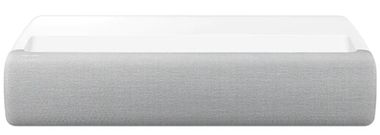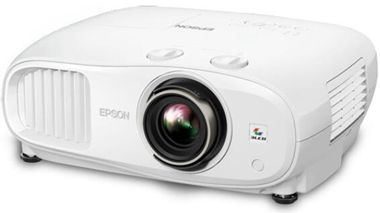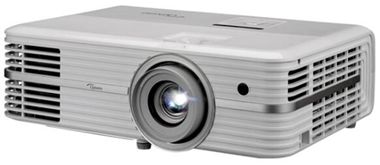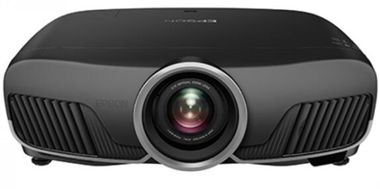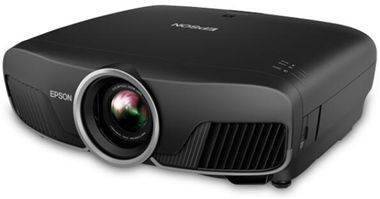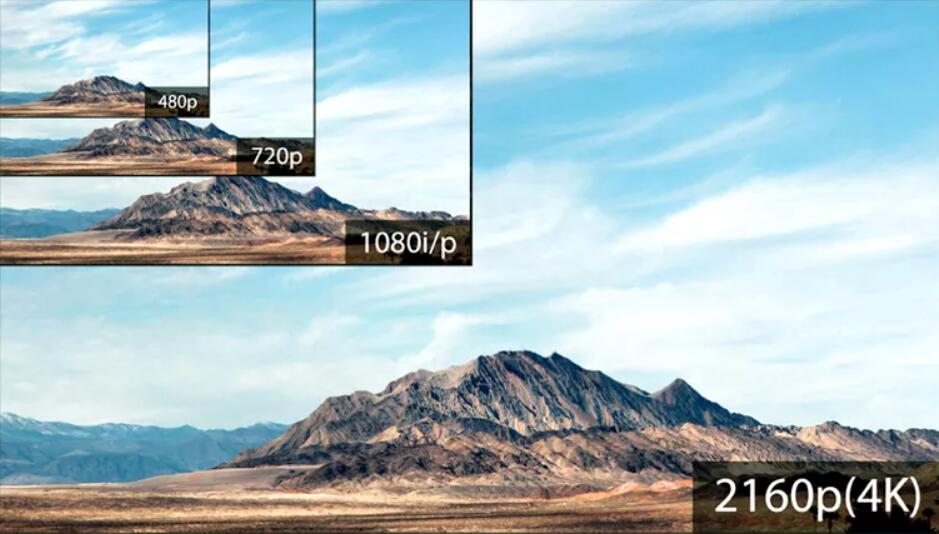
A 4K TV/Projector is a TV/projector set with 4K resolution. That means the TV has 3,840 horizontal pixels and 2,160 vertical pixels, for a total of about 8.3 million pixels. On TV product specifications, resolutions are usually shown as “3840 x 2160” for 4K TVs.
Resolution is a term that tells you just how densely these tiny dots, the pixels, are put together on the display. Individual pixels collect together to make up the image you see on the screen, so the higher the pixel count the higher the resolution. The “K” in 4K stands for Kilo (1000), meaning a TV that has achieved a horizonal resolution of about 4,000 pixels.
Contents
What is resolution?
Resolution, in terms of TV hardware, refers to the number of pixels that compose the picture on the TV. A single pixel, or discrete picture element, consists of a tiny dot on the screen.
There are numerous resolutions found on flat-panel TVs. Older TVs, and many 32-inch models sold today, have a million or so pixels (720p). More recent and slightly larger TVs (typically 49 inches and smaller) have a little over 2 million pixels (1080p). Even newer and bigger TVs (typically 50 inches and above, although numerous smaller sizes too) have 8 million (for 4K Ultra HD). And the newest, largest and most ridiculously expensive TVs have over 33 million pixels (8K). You’ll have to look very closely, or whip out a magnifying glass, to discern each one.
Resolution is one of the most common specifications used to sell TVs, partly because “4K” and “8K” sound really high-tech and impressive. However, resolution is not the most important ingredient in picture quality. Just because a TV has higher resolution than another, doesn’t always mean it looks better. It might, but not always, and for reasons that have little to do with resolution. A TV with better high dynamic range (HDR) performance, a better overall contrast ratio or better color will look better than one that just has more pixels.
Why 4K?
What makes 4K resolution significant is that with the use of ever-larger TV screen sizes as well as video projectors, it provides much more detailed and less pixel visible images than 1080p. 1080p looks great up to about 65-inches, and can still look good in larger screen sizes, but 4K can deliver an even better-looking image as screen sizes continue to increase.
What 4K Really Means for Consumers
The increasing availability of 4K delivers consumers a greatly improved video display image for larger screen applications, and can greatly reduce the ability for viewers to see any visible pixel structure on the screen unless you place yourself extremely close. This means even smoother edges and depth. When combined with faster screen refresh rates, 4K has the potential to deliver almost as much depth as 3D—without the need for glasses.
The implementation of Ultra HD doesn’t make a 720p or 1080p TV obsolete, although, as 4K Ultra HD TV sales pick-up and prices come down, fewer 720p and 1080p TVs are being made. Also, the current HDTV TV broadcast infrastructure will not be abandoned anytime soon, even as ATSC 3.0 begins to be used for content transmission.
Of course, just as with the 2009 DTV transition, there may come a date and time certain where 4K may become the default TV broadcast standard, but that means a lot of infrastructure needs to be in place.
The Best 4K (3840×2160 resolution) Projectors 2024:
We’ve reviewed dozens of the most exciting UHD projectors, judging them based on price, brightness, color and contrast, usage and a few other criteria to help us pick our favorite projectors. As new projectors in 2021 are released we’ll update our list to give you the most up to date top choices.
1. Samsung Premiere LSP9T
Even the best 4K projectors don’t often get release hype, but Samsung’s first projectors in 10 years created quite a buzz at its release in late 2020. The Premiere LSP9T matches up to every bit of the hype and more to make claim to being the best 4K projector on the market today.
The innovative three laser light source delivers exceptional pictures, with a laser each for red, blue, and green lights. This means incredible brightness and colours, even with ambient light. This is true 4K, without compromise. Even more impressive is the incredible short throw, meaning you can place this close to your projection surface and achieve a gigantic picture. There are some occasional rainbow effects, and – like most projectors – you may need to tweak the picture for darker images, but these do not spoil an incredible watching experience.
It even has all the functionality you’d expect from a smart TV, with Samsung’s Tizen smart TV interface giving all your usual menus, streaming apps, and content. You can even use Samsung’s built-in Bixby system (with Alexa and Google Assistant support if you have listening devices already). As a minor gripe though, the OS can run a little slow at times.
2. Epson Home Cinema 3800
Launched in September 2020, this is a great projector that makes Epson very competitive at this end of the best 4K projector market. But it gives a great picture which belies the price. Colours are impressive for wide landscapes or close-ups of faces, and although there are some of the problems with blacks lacking depths which projectors often suffer from you’d have to be quite pernickety to spot it.
While there aren’t any frame interpolation options on 4K-level settings, motion blur is low and action remains smooth. Even when switched to the 1080p modes there’s a fantastic picture, plus many extra settings to reduce any blur even further at this resolution.
The option of Bluetooth audio output means you don’t need to have quite so many wires trailing across the room if you’ve run a soundbar under the projected image. However, there are some practical niggles: the onboard controls are a little cluttered; and the dials for lens shift are a slightly strange way to employ this feature. But once you’ve set it up and you’re staring at the beautiful image these minor issues will be quickly forgotten.
3. Optoma UHD40
The key to Optoma’s success with this projector is its price – you simply won’t find 4K imaging this cheaply and with such quality reproduction anywhere else.
In fact, as you’ll see, you could pay multiples of its price from other manufacturers.
The UHD40 is a cracking projector with solid brightness and great colour, plus pinpoint detail. If you’re looking for a 4K projector and don’t have thousands to spend it’s a superb pick, although it lacks some of the portability and ease of use that others manage.
4. Epson EH-TW9400
This sleek projector from Epson might be a good chunk more expensive than others on this list, but it’s still a good price when you survey the market more widely, given that you’re getting really good 4K video with HDR, and a really impressive contrast ratio.
It uses pixel shifting to upscale to 4K, meaning that it can’t quite match the detail of more expensive models (like the Sony that’s up next), but it’s still a great option for most people’s needs.
It’s really easy to use and adjust, too, which is an absolute must for home projection, and its remote is a dream.
5. Epson 6050UB
If you want a projector that looks good, the Epson 6050UB isn’t for you. If you want a projector that looks AMAZING get the Epson 6050UB. This UHD projector far exceeds expectations with fantastic black levels, breathtaking sharpness and a dazzling color palate.
This 5 star projector easily pays for itself when you stop going to the movie theaters and just buy the blu rays to watch on your own theater. If you’re thinking about buying the 6050UB, do it – you won’t regret it.
